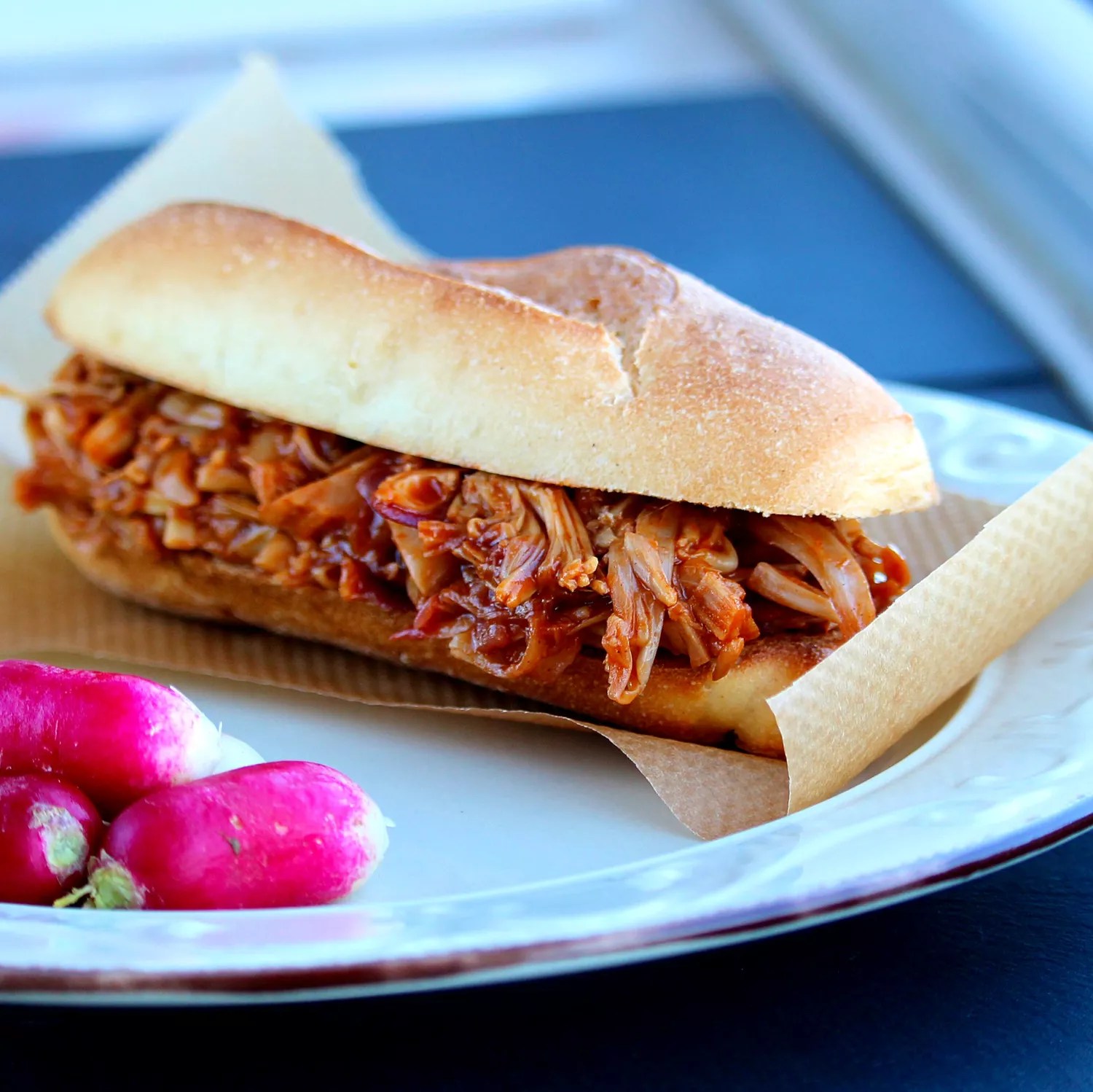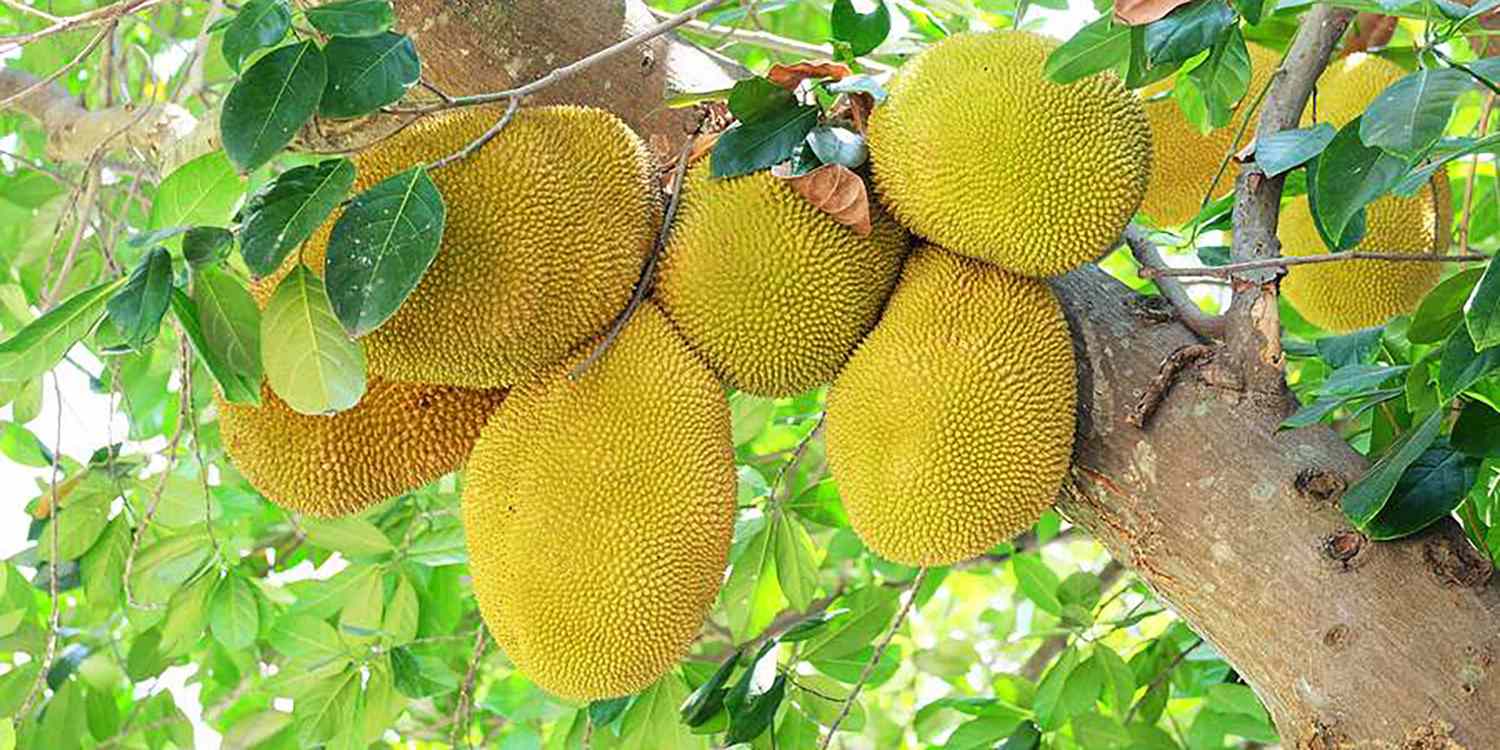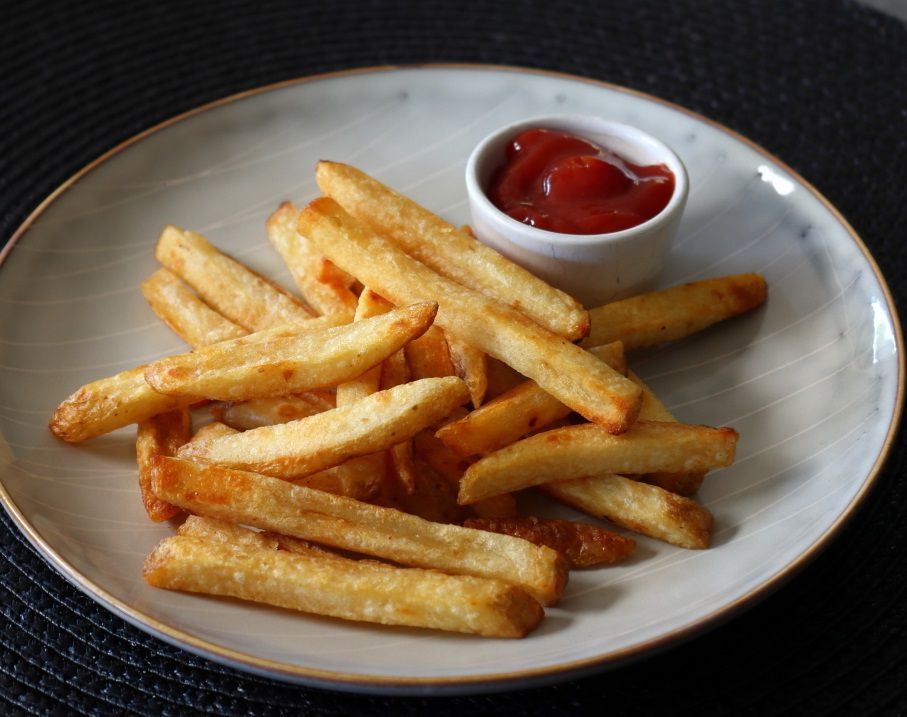What Is Jackfruit?
Jackfruit has a rather striking appearance; extra large, green, and spiky – you’re not likely to overlook it. Sometimes weighing in at over 100 pounds, this member of the breadfruit family is massive. While. you won’t 100-pound specimen in stores, it is common to find fruits around a foot long weighing 10 pounds or more.
It grows in many Asian countries and is especially popular in India, Bangladesh, Thailand, and Indonesia. Jackfruit has been a staple in many cuisines for thousands of years but has recently become more prevalent in Western countries, especially in the vegetarian culinary world
The exterior has a hard, thick skin — almost like a shell covered in small, stout bumps or spikes. Once open, you’ll find some soft, fleshy bulbs, usually light yellow in color. Within the bulbs is a hard seed that you’ll want to avoid. Avoid the inedible skin and enjoy the fleshy pods make for a delicious treat. Jackfruit does contain natural latex, so if you have a latex allergy, jackfruit may not be safe for you.
Where to Find Jackfruit
Jackfruit can be bought either fresh or canned. The canned variety is more common and is already cleaned and ready to be cooked. It’s stored in brine, making it more tender and easier to break down if your recipe calls for it. With the presence of vegan products and ingredients from around the world becoming more common, you’ll likely be able to find canned jackfruit in your local grocery store. Check the international aisle or tropical produce section for the best results.
If not, you’ll likely locate it at specialty produce markets or your local Asian market. If you have one in your community, give them a visit, and you’ll likely be greeted by a few brands of canned jackfruit in addition to fresh options. You might also find soft, sweet jackfruit canned in a thick syrup. This is an excellent buy for spooning over ice cream or eating straight from the can!
What Does Jackfruit Taste Like?
In its unripe stage— usually labeled as “young” or “green,” jackfruit is very neutral and mild tasting. This is the type to look for when making savory recipes. As it matures, it develops a distinct fruity flavor similar to a cross between a mango and a banana and an intensely sweet aroma, with a slightly pineapple-y scent.
Ripe jackfruit doesn’t work as well for things like carnitas on nachos but makes a great ingredient for a tropical dessert, especially dairy-based treats like custard. It’s also a great add-on to smoothies, bringing extra sweetness and a tropical hint to any combo. Plus, it’s a great source of potassium as well as fiber and vitamin C, making it perfect for a morning boost.
Why Is Jackfruit Used as a Meat Substitute?
One of the most common uses for jackfruit is as a meat substitute, primarily due to its texture. When cooked, jackfruit mimics the texture of shredded meat like pork or chicken. Jackfruit responds exceptionally well to being cooked in a sauce as it can really soak up the flavor, making it perfect for things like vegan pulled pork sandwiches or chicken tinga tacos.

Get the recipe:Jackfruit Pulled “Pork”
Jackfruit also has a mild, salty flavor which plays well with most savory sauces and seasonings. It’s not too assertive, so it doesn’t tend to overpower anything paired with it.
How to Prepare Fresh Jackfruit
Fresh jackfruit is a luxurious treat but can be extremely difficult to break down. If you’re feeling confident in your knife skills, it’s worth the work. The outer skin is extremely tough so make sure you have a sturdy knife, a large cutting board, and a space that can accommodate it. To avoid injury, wet a paper towel or rag and place it under your cutting board to avoid any movement.
Next, you’ll want to grab a pair of disposable gloves since jackfruit can be sticky. Begin by cutting the jackfruit in half lengthwise– this may take a few cuts to get all the way through. If you find that your knife is sticking from the sap that tends to ooze out of the fruit, try rubbing the blade of your knife with a few drops of vegetable oil for cleaner cuts.
Once the jackfruit is in halves, pull out each pod and remove the seed. Reserve the pods and discard the seeds. Once you’ve got all the pods out, you’re ready to go! Use them immediately or store them in a sealed container in the fridge for about three days.
Best Ways to Use Jackfruit
Jackfruit can be used in both sweet and savory dishes, so there’s lots of room to experiment. If you get your hands on a mature, fresh jackfruit, try it in desserts. Its tropical flavor melds well with dairy and other creamy items, especially coconut milk. Jackfruit makes a great addition to custards and ice cream. Panna cotta, creme bruleé, and pudding can be adapted to include some jackfruit puree and pack a serious tropical punch.
Savory applications are best for green or immature jackfruit and the more commonly found canned jackfruit. It’s an excellent substitute for shredded chicken or pork, so it can easily be swapped into some of your favorite meat recipes. We love it in smokey barbecue pulled pork sandwiches that’ll please both vegans and meat-eaters, or give it a try in zingy jackfruit tacos.
Related:
- The Best Vegetarian Cookbooks to Power-Up Your Produce Game — Chef-Approved
- 15 Vegetarian Meals With 5 Ingredients (Or Fewer)
- Meatless Monday Ideas That Everyone Will Love




